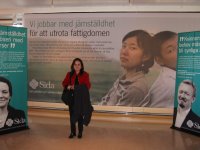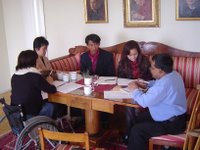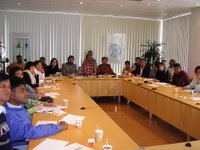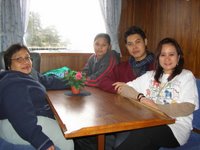
Children in conflict with law are called Youth Offenders or Juveniles in Conflict with Law. Are they languishing in jails and prisons today? There are so many articles already written about it, and almost instantaneously blaming the present administration about issues pertaining to juveniles.
As they always say “A Jail is no place for a child…” but because of the social conditions, a child is prone to commit mistakes, and one mistake in conflict with law, will cost the prime of his youth. What is the present government doing now to alleviate this social illness? Their numbers seem to swell, as these juveniles go in and out of jails. Have society lost their hope on our youth?
Being on the positive side, there is always hope, and it is a reality that youth offenders can be transformed into productive young citizens of our society. The answer is a definite Yes.
Pursuant to the mandate of the Department of Justice or DOJ as the principal law agency tasked to carry out the policy of the State to administer the correctional system, and the Bureau of Corrections which is primarily responsible for the security and rehabilitation of prisoners, the Muntinlupa Juvenile Training Center or MJTC was established in 2003 as a pilot project of the DOJ and Japan International Cooperation Agency (JICA), segregating the youth offenders from that of the adult offenders.
Dr. Edilinda Garcia-Patac, head of MJTC describes the mission of the MJTC “To prepare youth offenders confined at the Bureau of Corrections for their eventual reintegration into the free society by segregating them from adult offenders and providing them a holistic rehabilitation program.” The MJTC facility is located within the Bureau of Corrections, Muntinlupa City, and is designed to accommodate juvenile offenders undergoing special rehabilitation programs and skills training. As envisioned, “a psychologically, intellectually, spiritually and physically rehabilitated youth offender with employable skills essential to his being a productive and responsible member of society.” As emphasized by Dr. Patac, a psychiatrist by profession, who also heads the Bureau of Corrections’ Reception and Diagnostic Center as chief.
A visit to the facility, one could see the serenity and conduciveness in the surroundings that is indeed suitable for a no-nonsense rehabilitation. Said facility can be considered at par with similar facilities in developed countries. Most importantly, MJTC is a haven away from social illness that is contaminating the unsuspecting youth, because of its rehabilitation and training programs. MJTC offers spiritual counseling, skills development and training programs such as welding, computer literacy and practical electricity courses to effect the physical, moral, spiritual and psychological rehabilitation of the juveniles, as well as enhance their employment capabilities to prepare them for their reintegration into the mainstream society.
The MJTC adopts the universally-accepted Therapeutic Community (TC) modality as its program base, emphasizing behavior modification on the part of the juvenile. In the end, personal growth and maturity is fostered in each juvenile, coupled with a sense of responsibility, honesty, humility and discipline – values necessary to sustain a productive and morally-guided life. The TC program for youth offenders was designed by Dr. Patac, which was successfully implemented in the Bureau of Corrections’ Drug Rehabilitation and Treatment Center or DTRC, inside the Medium Security Camp.
The MJTC is managed professionally within an environment that resembles a normal family, with the hierarchical ladder of a Therapeutic Community. Manned by selected, specially trained and dedicated personnel consisting of administrative staff, rehabilitation workers and security personnel, MJTC have achieved its primary vision. The continued support and assistance given by the Non-government Organizations (NGOs) and Religious Volunteer Groups have sustained MJTC in its daily operations.
In the Therapeutic Community, there are rewards and demerits, where the purpose is to develop among the youth offenders the sense of responsibility, honesty, humility and discipline. Upon admission, the treatment and rehabilitation begins using the various phases. The Therapy proper uses Transactional Analysis; Psychodrama; and Branch Groups as its techniques of implementation. Various skills development and training programs are also conducted. Aftercare services are given for the next six months after their completion, these are continuing services aimed at decreasing the risk of relapse and recidivism. These include group sessions and individual counseling. A follow-up study is conducted after program completion.
To fully achieve MJTC’s vision, additional skills training and livelihood programs are currently being developed. These programs include food processing, hair technology and reflexology, to name a few. Educational field trips in relation to their vocational training courses shall be implemented, as well as recommending them for future employment once released.
According to Dr. Patac, “All these shall be made possible in achieving our objectives through the coordination and support of various NGOs and concerned organizations for the youth’s welfare currently under confinement, with the end view towards the establishment of a National Juvenile Training Center that could comfortably accommodate 250 youth offenders, as we all join hands and channel our collective efforts towards youth offenders’ rehabilitation. It’s never too late. Yes, there is hope for them.”
Thus, Hope for Youth Offenders is a reality.
























 The Philippine national prison's RDC
The Philippine national prison's RDC